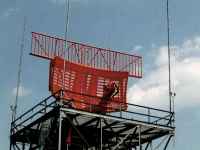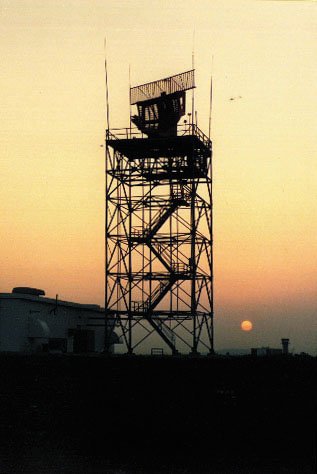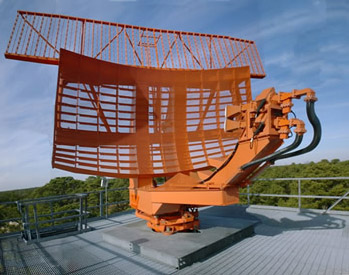Airfield Surveillance Radar ASR 9
Description of the radar set, tactical-technical characteristics
| Specifications | |
|---|---|
| frequency: | 2.7 to 2.9 GHz |
| pulse repetition time (PRT): | |
| pulse repetition frequency (PRF): | 325 to 1200 pps |
| pulsewidth (τ): | 1 microsecond |
| receive time: | |
| dead time: | |
| peak power: | 1.3 Mwgawatt |
| average power: | |
| instrumented range: | up to 60 NM |
| range resolution: | 450 ft |
| accuracy: | |
| beamwidth: | 1.4 degrees |
| hits per scan: | |
| antenna rotation: | 12.5 rpm |
| MTBCF: | |
| MTTR: | |
Airfield Surveillance Radar ASR 9
The Northrop Grumman ASR 9 is an advanced radar system, which has been operational at 135 U.S. locations and was the first airport surveillance radar to display weather and aircraft simultaneously. The first installation began in 1989 and was completed in 1995.
The ASR 9 combines circular polarisation with moving target detection for vastly improved aircraft detection in weather. A separate weather channel generates six weather levels, any two of which may be selected at one time by the controller. For detection of small targets in severe clutter, the ASR 9 employs a dual-beam antenna (Transmit in low beam only), advanced digital processing, sophisticated constant false alarm rate circuitry, and a scan-to-scan tracker. A clutter processor with a fine grain clutter map enhances returns from tangentially flying aircraft.
The system is completely unattended, incorporating a remote maintenance and monitoring system, and has a dual-channel meantime between failure of over 3,500 hours. Should a fault occur, a built-in test detects and isolates the problem, a capability that can be controlled from a central facility. Redundancy has also been incorporated in the antenna subsystem by the use of dual- drive motors and dual- azimuth pulse generators.




